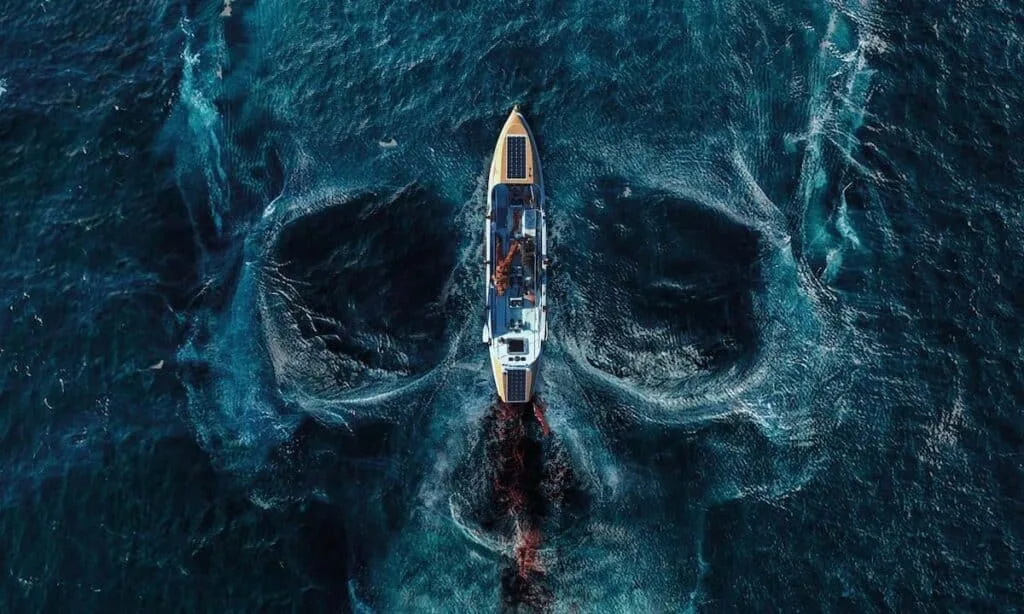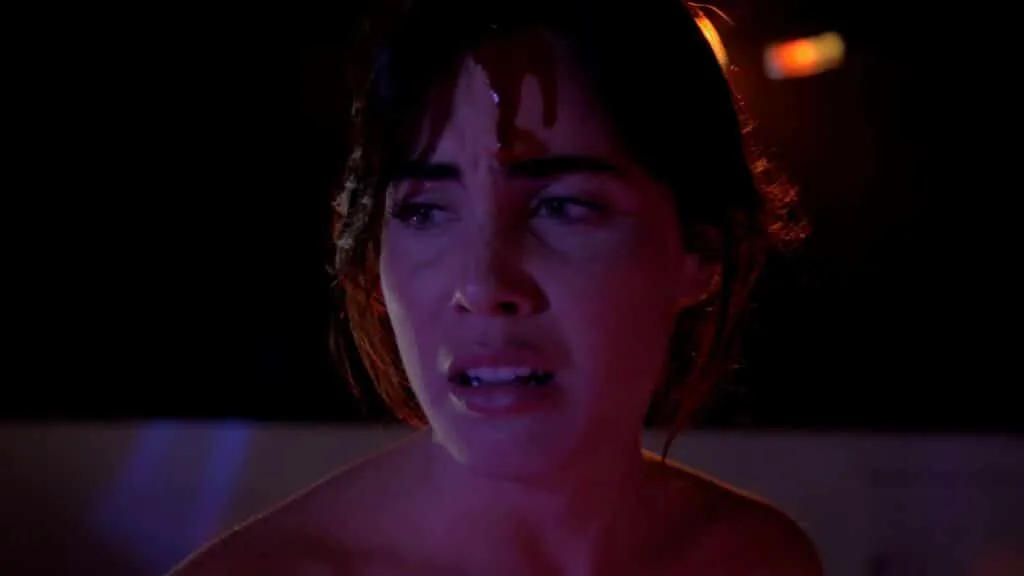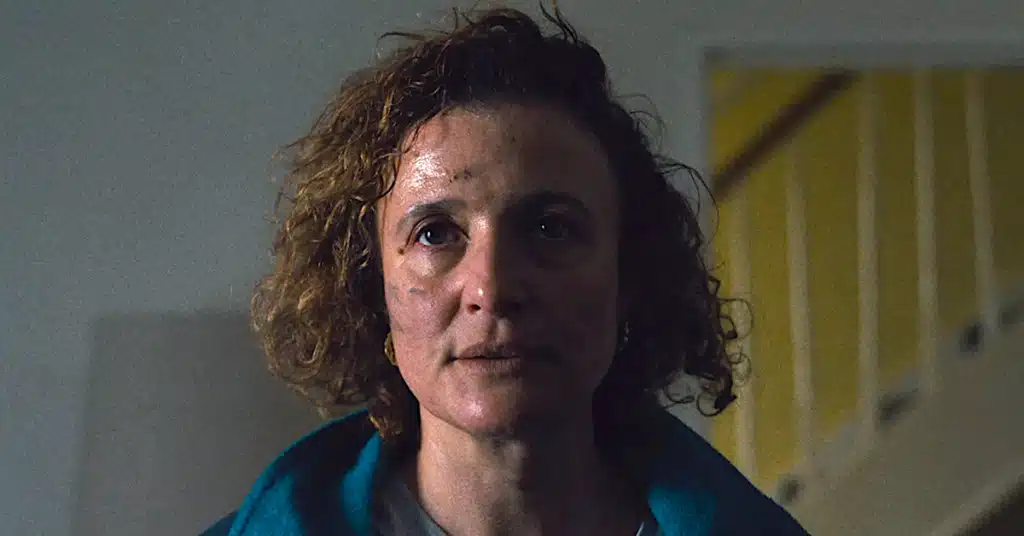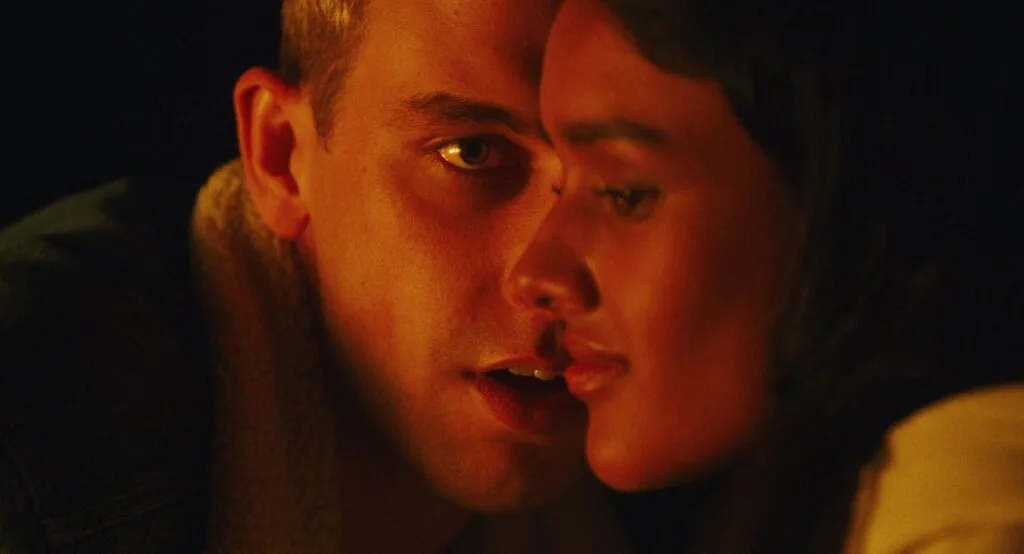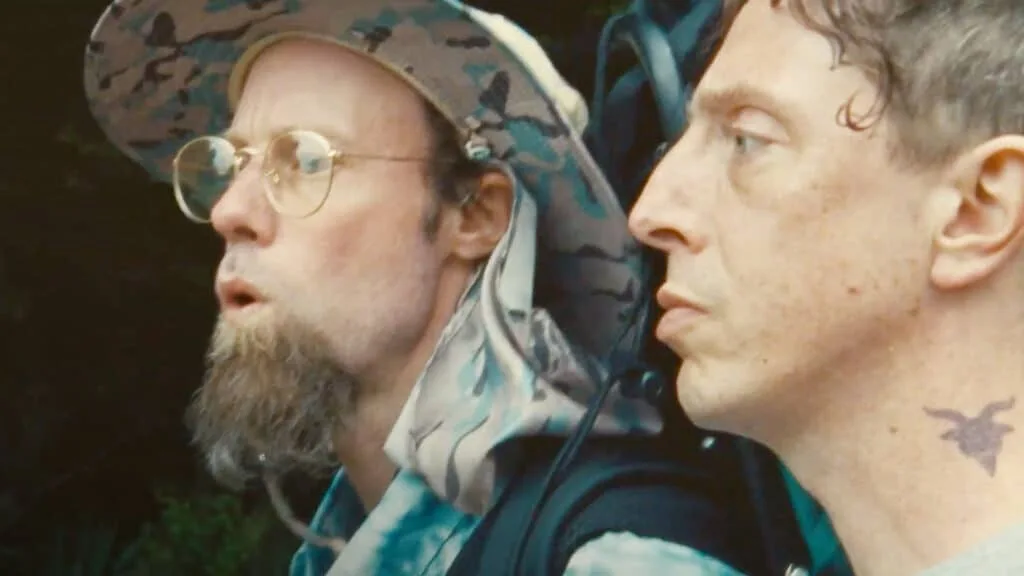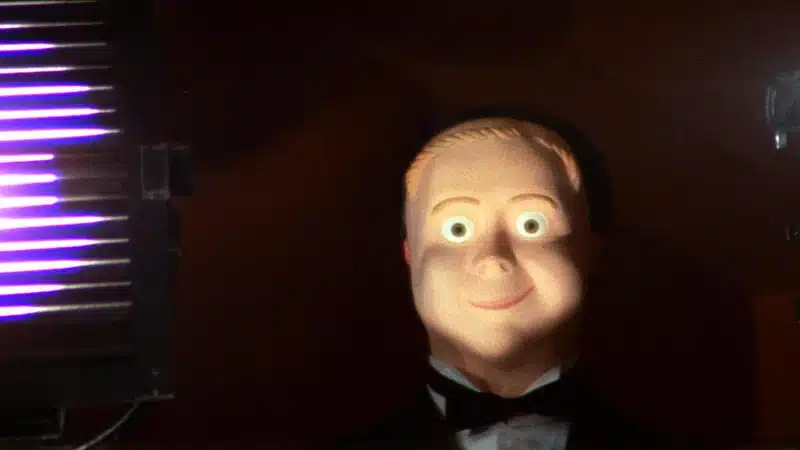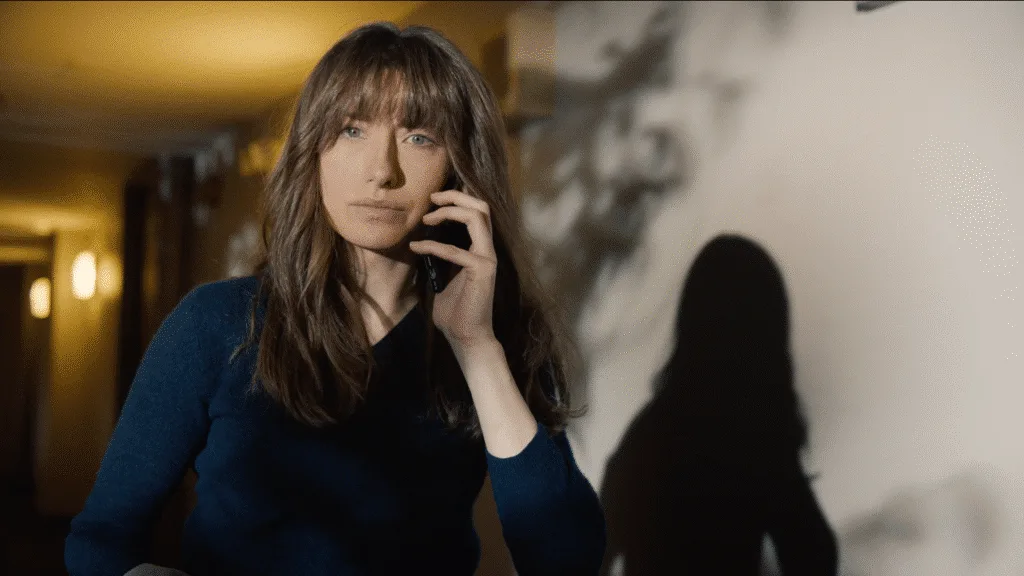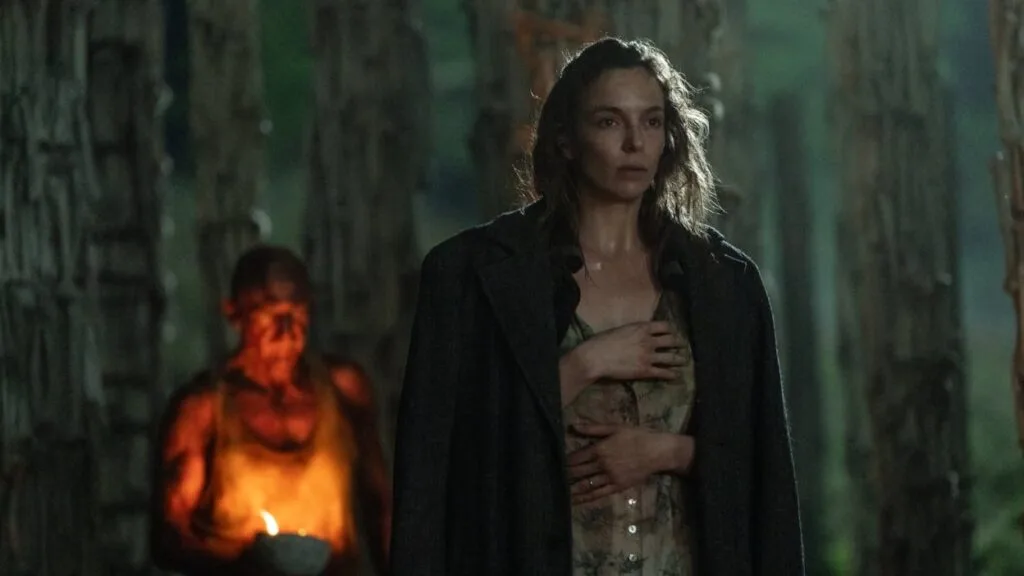
I have limited preamble for this review of 28 Years Later; let’s call it shock. Like many other film fans, I really liked 28 Days Later, despite sharing in the laugh at the end of Shaun of the Dead about its key plot point, because it had enough energy, initiative and charm to carry it through. Then I saw 28 Weeks Later, and forgot most of it instantly. Well, so, it seems, did director Danny Boyle, who has reused the start point of the first film whilst pretending the second film, with its insinuations of asymptomatic carriers and infection across Europe, never existed. The resulting new film is an awkward and painfully unaware montage of some of the good bits from 28 Days Later, unconvincingly strung together with a silly, half-realised story unworthy of the excellent actors who signed up to be in it.
This review contains mild spoilers.
In 28 Years Later, the virus which obliterated the mainland UK (and Ireland too, it’s suggested here?) isn’t quite as we may remember it. Sure, it does the same job, instantly turning people into vomiting, spasmodic rage vessels, but apparently the Infected don’t starve to death in this universe. Happily for the small No Blade of Grass-style community now installed on Holy Island in Northumberland, the Infected’s instinct to eat and drink never seems to extend to them wading through the water (or popping along at low tide) to attack this possibly last real bastion of the living. On the island, we are introduced to twelve year old Spike (Alfie Williams), ahead of a big bonding day with his father Jamie (Aaron Taylor-Johnson). They’re off to the mainland together for the first time, for reasons which quickly turn out to be questionable; not for them, bagging one of the hundreds of wild deer now roaming freely; instead they’re there to take potshots at the remnant Infected who still wander/slither through the woods, eating very calorific worms. This obviously goes terribly wrong, not least because the geography of Britain has started to act up: Jamie points out to Spike that they’ve attracted the attention of an Alpha, an Infected male who enjoys dominance over the others (for reasons you may want to hazard a guess at). This is symbolised by the way he stands by a tree, looking menacingly at them, and that he can continue to be seen standing by the same tree, even when the man and the boy have run away and holed themselves up in a farmhouse attic somewhere else.
Other things can be seen from this magic attic window. One of those things is a fire; Jamie claims to know nothing about this fire or whose it might be, but when they finally get safely back to the island, Spike asks around, finding out from family friend Sam that this is probably one Dr Kelson, a local madman everyone avoids because of his corpse-collecting proclivities. But he’s a doctor; some of them are a bit funny, and at home, Spike’s mother Isla (a criminally underused Jodie Comer) is ill and confused, dreaming of a lost world of Nurofen and the sound of internet dial-up (the film’s use of nostalgia is always jarring). Spike, unimpressed by the spin which his father is by now putting on their daring deeds on the mainland, decides that he’s going to take his mother to see this doctor in the hopes of a cure.
In case you aren’t familiar with British geography, the fire seen by Spike and Jamie is now, incomprehensibly, a round trip of 70 miles south from Holy Island to the Sycamore Gap, and then another day’s walk east to the Angel of the North near Newcastle. Oh, I know, it’s churlish to get absorbed by such details, but why bother to get anything right if you can’t be bothered to get a central plank of the storyline in any way hammered into a plausible shape? Forget the landmarks and consider the relative distance being travelled: can we really suspend our disbelief on all counts – including time and space? The idea of a rage virus is enough of a suspension of disbelief, surely; why else did Boyle and Garland go to so much trouble in 28DL to build verisimilitude around a deserted London? It’s a lot to ask, particularly in a film which puts the Tellytubbies in twice for good measure and selects for its end sequence an homage to an infamous sex offender, because, oh I have no idea why, maybe because ‘we didn’t know then’, but we bloody know now, it’s a bafflingly bad joke and regardless, we did know where things were on a map even in the Noughties. Anyway, Isla is ill and really not up to 110 miles on foot, the Infected have morphed into a blend of the cave dwellers in The Descent and the hive from I Am Legend, and the journey is beset by incredible risk. Well, that’s what it’s like trying to see a doctor in this country.
Come to think of it, where are all these Infected coming from? Is the insinuation that there are still lots of people becoming infected after nearly three decades, or have some of these people been born into it? Is there rudimentary childrearing taking place? They’re all stark naked, by the way, save for one woman who really didn’t need the signifier of a tattered flowery dress, given her condition. This irate nudist colony are still a big enough threat to pursue mother and son through the countryside: will Spike be able to get Isla the help she needs? Can they possibly survive?
Along the way, it’s not fully clear whether the inclusion of scenes from the first film are there as Easter eggs (a particularly noxious form of fan service which often breaks up an already shattered narrative) or if they suggest a lack of confidence in the new storyline, but neither scenario really suggests much that’s good about the writing process here. Rats, crows and soldiers all pop in for a cameo, but little about any of these matters to the grand scheme of things. At least, though, there’s something palpable here, and it moves things away from the film’s early montage style sequences – braying music, fast edits, cuts to black and white footage and a Kipling recitation; things which would have looked dated even 28 years ago. The film gestures towards philosophising in places, but never quite gets there: it’s off doing something else, flinging spinal columns around or lingering lovingly on Tango ads. It even paints its doctor orange.
I think that’s actually the problem here, though: we just have a gamut of bits and pieces, not a narrative rise and resolution. It’s just a grab-bag of ideas, edited together. That’ll do them. Parts of the film very clearly marked out as being emotive are handled with due gravitas by a trio of actors more than equal to the scene, regardless of how little writing they’ve had until that point (Comer is able to carve something meaningful from her role, despite being prostrate in bed for the first hour), but hot on its heels is something so bizarre in tone that it threatens to wash away the more meaningful pause which came before it. Sure, the emotionality feels a little contrived anyway, but it’s sandwiched between great slabs of silliness, and if it’s too much to say that feels insulting, then it certainly feels magnificently wrongheaded. Two more films in this franchise to come, you say? Two more, like this?
28 Years Later (2025) is in cinemas now.
